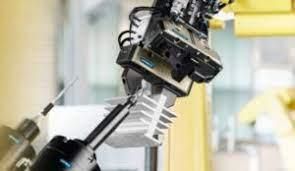
Let's start with a quick discussion of the term "actuator." An actuator is a device that causes an object to move or operate. Digging deeper, we find that actuators receive an energy source and use it to move objects. In other words, actuators convert an energy source into physical mechanical motion.
Actuators use 3 energy sources to produce physical mechanical motion.
- Pneumatic actuators are operated by compressed air.
- Hydraulic actuators use various fluids as energy sources.
- Electric actuators use some form of electrical energy to operate.
The pneumatic actuator receives the pneumatic signal through the top port. This pneumatic signal exerts pressure on the diaphragm plate. This pressure will cause the valve stem to move downward, thereby displacing or impacting the control valve. As industries rely more and more on automated systems and machines, the need for more actuators increases. Actuators are widely used in a variety of manufacturing processes, such as assembly lines and material handling.
As actuator technology advances, a wide range of actuators with different strokes, speeds, shapes, sizes and capacities are available to best meet any specific process requirements. Without actuators, many processes would require human intervention to move or position many mechanisms.
A robot is an automated machine that can perform specific tasks with little or no human involvement, with high speed and accuracy. These tasks can be as simple as moving finished products from a conveyor belt to a pallet. Robots are very good at pick and place tasks, welding and painting.
Robots can be used for more complex tasks, such as building cars on assembly lines or performing very delicate and precise tasks in surgical theaters.
Robots come in many shapes and sizes, and the type of robot is defined by the number of axes used. The main component of every robot is the servo motor actuator. For each axis, at least one servo motor actuator moves to support that part of the robot. For example, a 6-axis robot has 6 servo motor actuators.
A servo motor actuator receives a command to go to a specific location and then takes action based on that command. Smart actuators contain an integrated sensor. The device is capable of providing actuation or movement in response to sensed physical properties such as light, heat, and humidity.
You'll see smart actuators used in applications as complex as nuclear reactor process control systems and as simple as home automation and security systems. Looking to the near future, we will see devices called "soft robots." Soft robots have soft actuators integrated and distributed throughout the robot, unlike hard robots which have actuators at each joint. Bionic intelligence adds artificial intelligence, providing robots with the ability to learn new environments and the ability to make decisions in response to external changes.
Post time: Sep-11-2023






